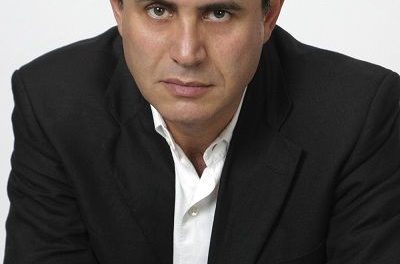
Offbeat 23 September
If you have ever read the Judge Dredd comics, or perhaps seen the Dredd movie that featured Sylvester Stallone doing a poor impersonation, you will probably have come across the Angel Gang, particularly the character Mean Angel, the one who has a dial on his head and lives in a permanent emotional state that hovers between seething anger and insensate psychotic rage.
Mean Angel has an origins story in the grand tradition of comics. He was a sensitive soul, which didn’t suit his father, Pa Angel, leader of the gang. Pa had Mean modified to be angry, and the dial inserted in his head to allow him to set the level of rage.
As I read it, Mean Angel is one of the better villains that Judge Dredd contends with, tough and always worthy of and ready for a battle. However as 2000AD, the magazine in which Judge Dredd appears, matured into adulthood with its readers, the stories matured as well, posing questions and setting examples, in the way of the literary form of the comic. Mean Angel’s story evolved into an archetypal cautionary tale.
Mean’s anger became a cartoon of the effects of anger. In every tale his rage becomes his undoing. The character’s stock fight move is the headbutt. He is easily brought down and defeated by a getting him to headbutt something in a way that causes damage to himself and traps him. One of the stock endings is that Dredd steps sideways and Mean headbutts a building, which collapses on him. He is then captured, placed in a cell and continues to headbutt the walls in a futile expression of his rage.
I cannot find a similar example in the earlier well of cautionary tales, for instance the Brothers Grimm or Aesop. Mean becomes valuable because he shows the senseless futility of anger. I don’t know, in all honesty if there is something akin to him, so for my purpose he is the cautionary tale.
Everyone lives with anger, rage and unhappiness. Without it, there would be stasis. It’s the counterpoint to tranquility, happiness, laughter and love. Without the flip-side of negative emotions humanity would probably not be able to value positive emotions.
This week I found myself in a state of rage for a few hours, infected by the rage of others. Thoughts of the seductive but false empowerment of Chuck Palahniuk’s Fight Club elbowed their way into my mind. A day of stress and the infection of the rage of others infected me with the apparent need for a brawl. I thought about another comic, Cerebus the Aardvark , about political Machiavellianism and violence, with brawls in it. I thought about Mean Angel. The desire subsided. It takes me years to lose my temper. The idea of a brawl can wait for a few more years, and the translation of that idea into a reality can wait forever as far as I am concerned.
What struck me is that rage is infectious. Maybe it’s a pheromone. Maybe it is that the stress of someone else’s rage induces mirroring rage. Whatever. But I got to the point where I also understood that my own rage was not deserved. It was a poisoned chalice, handed to me by others. I am still feeling it, but on a far more residual level.
There are more than enough reasons to find a state of rage. The obvious thing is the frustration of persistent stress. There is the ugly phenomenon of fetal alcohol syndrome. And it might be the lingering effects of childhood meningitis. It might be unresolved abuse. Or it could be a genetic or pathological propensity for violence. Whatever the case, it needs to be managed, suppressed, defused. From the example of Mean Angel, it harms others and it harms the people who express it. It also infects others.
A footnote to this is that the commandments and strictures of almost all religions are largely to do with the management of anger and putting a halt to perpetration of violence.
The sad thing is that it is easier to produce unhappiness than happiness. Rage is sickness be it biological or mental. It needs a cure, and once again I find myself looking for a cure for myself.











































